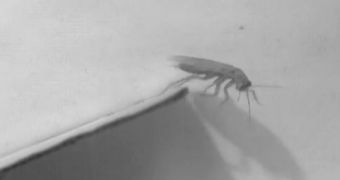A collaboration of biologists at the University of California in Berkeley announces the discovery of a practice that enables cockroaches and geckos, among others, to evade their capture by performing high-speed inversion maneuvers.
The new study, made easier by slow-motion observations from multiple angles of what happens when cockroaches escape, may provide insight that could help insect exterminators become more efficient.
Humans have been frustrated about the cockroaches' ability to escape and avoid being squashed for quite some time. Apparently, the speedy insects are able to evade capture in nearly all situations, and can literally disappear from sight when they please.
UCB biologists think they have discovered a trick that these creatures employ in order to pull a vertical 180. They can literally flip under a ledge, continuing upside down, in the direction they came from, except under that particular surface. See the attached video for details.
Over eons, the insect evolved grappling hook-like claws on its back legs. These enable it to swing the rest of its body like a pendulum, landing underneath with relative ease. By using Velcro strips, robotics experts at UCB managed to replicate this behavior.
“This work is a great example of the amazing maneuverability of animals, and how understanding the physical principles used by nature can inspire design of agile robots,” UCB professor of electrical engineering and computer sciences, Ron Fearing, explains.
A paper describing the findings appears in the June 6 issue of the open-access, peer-reviewed scientific journal PLoS ONE, which is edited by the Public Library of Science. Initially, the researchers were investigating how the insects used their antennas to sense large gaps.
“As we made the gap wider, they would end up on the underside of the ramp,” explains UCB biophysics group graduate student Jean-Micheal Mongeau, who was conducting the antenna studies with a number of colleagues.
“To the naked eye, it wasn’t clear what was happening, but when we filmed them with a high-speed camera and slowed it down, we were amazed to see that it was the cockroach’s hind legs grabbing the surface that allowed it to swing around under the ledge,” he concludes.

 14 DAY TRIAL //
14 DAY TRIAL //